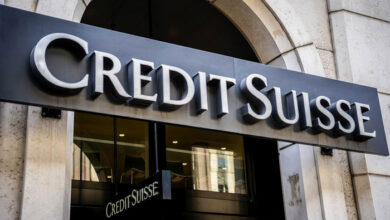Analysis: Kuroda’s sudden change in policy leaves the door open for a bigger change next year.

Sources say that the Bank of Japan’s unexpected decision to loosen its grip on the yield cap is the start of the end of Governor Haruhiko Kuroda’s controversial policy and could make it possible for the massive monetary stimulus to be phased out next year.
The central bank changed its bond yield control on Tuesday in a way that makes it easier for long-term interest rates to go up. This surprised investors, who didn’t expect any changes until Kuroda leaves his job in April 2019.
Five government officials and sources familiar with the bank’s thinking say that the pressure for the BOJ to act now instead of later came from the government’s desire for more flexible monetary policy, the possibility of higher wage growth and inflation, and the risk of a U.S. recession next year.
They say that how far the BOJ goes now will depend on whether or not Japan’s economy can handle the headwinds of slowing global growth and whether or not wages will rise enough to support consumption.
“The government’s view is that the BOJ should be quick and flexible,” said an official with direct knowledge of the administration’s thinking. The official was referring to how the BOJ’s consistent dovish tone had caused sharp drops in the yen, which hurt households through higher import costs.
Kuroda said that the move would make yield curve control (YCC) last longer, but it also showed that the BOJ is determined to slowly move away from his radical policy before the governor’s term ends in April and a new leader takes over.
Takahide Kiuchi, a former BOJ board member who is now an economist at Nomura Research Institute, said, “With a new governor, the BOJ could move further toward normalising policy and making its monetary framework more flexible.”
Related: Kuroda of the Bank of Japan has spoken out against “rapid” yen movements.
“The economy and finances at that time will have a lot to do with whether it can really give up negative rates or yield curve control next year,” he said.
Sources say that the BOJ’s constant defence of its 0.25% cap on the 10-year bond yield forced the central bank to buy more bonds, reduced market liquidity, and messed up market prices, all of which were strains that were hard to ignore.
People say that by raising the cap to 0.50% this month, the BOJ eased the immediate stress on the market and bought itself time to figure out when it should take the next step toward ending YCC.
They say that if the BOJ had waited until next year, it would have had to deal with more market talk of a policy change soon or act when a deep U.S. recession could hit Japan’s economy.
“The BOJ passed a key step toward ending stimulus,” one of the sources said. “When there is so much uncertainty about the future of U.S. monetary policy, it probably wants to be able to act whenever it wants.”
KEY TRIGGER IN POLITICS
Sources say that the sudden timing of the move on Tuesday shows that the BOJ is facing more political pressure to move away from a policy that is only focused on its 2% inflation target.
In a meeting on November 10, Kuroda and Prime Minister Fumio Kishida agreed on the need to “guide policy in a flexible way” to keep wage growth going.
Some of the sources say that the agreement was made because the administration was worried about the side effects of the BOJ’s stubborn defence of its low-rate policy, such as a falling yen that was driving up the prices of imports and the cost of living for households.
“The prime minister and the BOJ governor talked about a flexible response at a meeting last month,” a government official said. “This is what made the BOJ act.”
Since then, the BOJ has given more hints that there might be a change in policy. This is a sign that the bank is becoming more hawkish as Kuroda’s ten-year term as head ends in April.
A few hours before he met with Kishida, Kuroda talked to parliament about how the BOJ could get out of its ultra-easy policy in the future. In a recent interview, one of his fellow board members, Naoki Tamura, said that the BOJ should do a review of its huge stimulus.
Asahi Noguchi, who is also a dove, said earlier this month that it “won’t be surprising” if the BOJ changes its monetary policy.
Analysts say that when Kuroda and his “dovish” deputy, Masazumi Wakatabe, step down, the BOJ will likely be more willing to think about ending its ultra-loose policy. This is because Kuroda and Wakatabe fought against steps to reduce stimulus.
The growing public backlash against rising living costs could also affect Kishida’s choice of the next BOJ governor and push the central bank’s debate toward ending YCC.
“If price hikes get bigger, wages look like they’re going up more, and Japan’s economy doesn’t go into a slump, the BOJ could have a more in-depth conversation about whether or not to change its policy framework,” a source said.
Players on the market are getting ready for more action in 2019.
“Even in Japan, inflation is now rising, and there are signs that wage growth is speeding up,” said Kentaro Koyama, Japan chief economist at Deutsche Bank. “I think the BOJ could take more steps toward normalisation in the near future” (ETR:DBKGn).
“Rising prices and wages should be the next thing that causes the BOJ to act.” “We will have our spring wage talks next year, and if we can get higher wage growth during these talks, I think it could lead to the end of YCC.”





